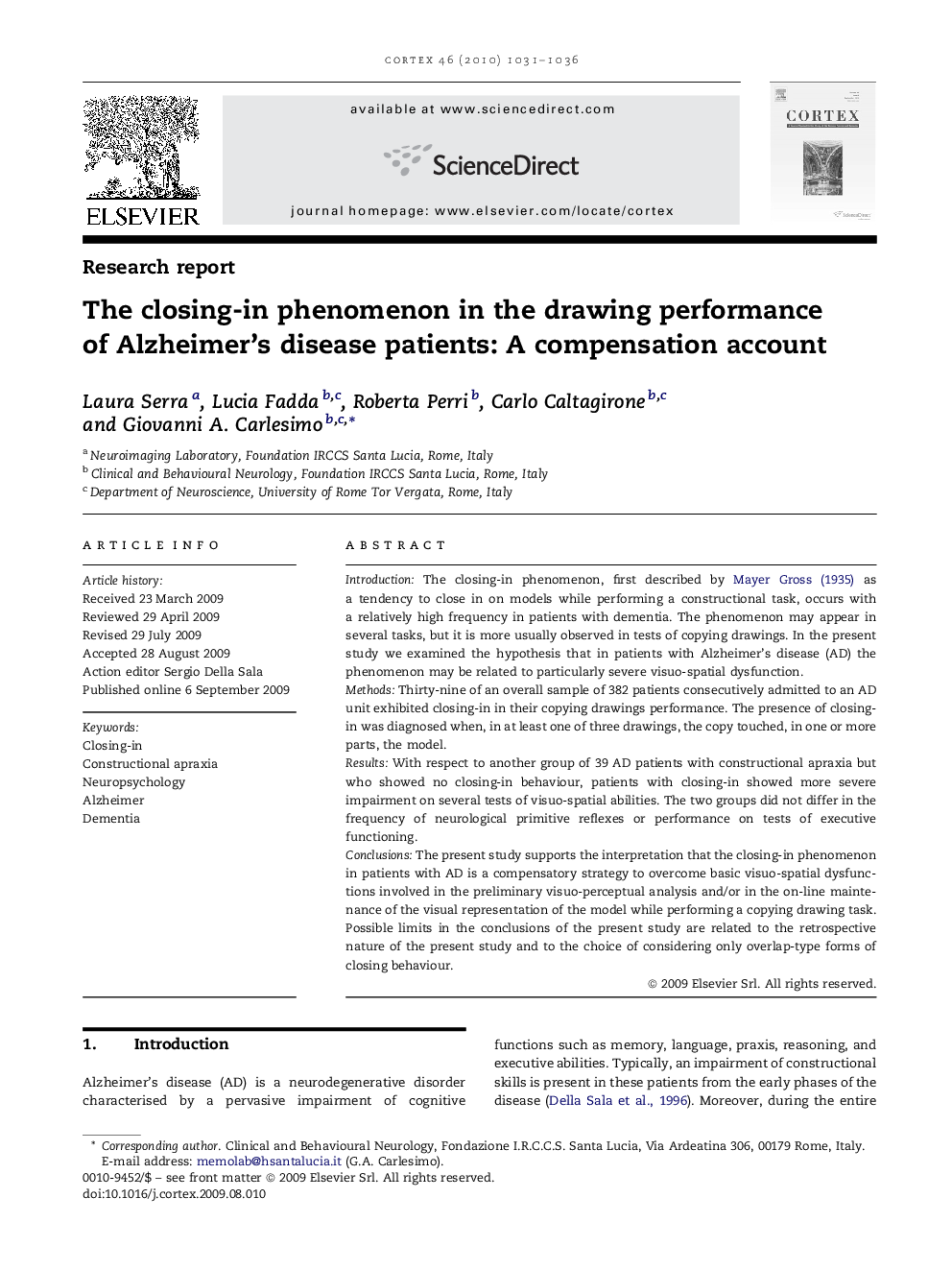| Article ID | Journal | Published Year | Pages | File Type |
|---|---|---|---|---|
| 942548 | Cortex | 2010 | 6 Pages |
IntroductionThe closing-in phenomenon, first described by Mayer Gross (1935) as a tendency to close in on models while performing a constructional task, occurs with a relatively high frequency in patients with dementia. The phenomenon may appear in several tasks, but it is more usually observed in tests of copying drawings. In the present study we examined the hypothesis that in patients with Alzheimer's disease (AD) the phenomenon may be related to particularly severe visuo-spatial dysfunction.MethodsThirty-nine of an overall sample of 382 patients consecutively admitted to an AD unit exhibited closing-in in their copying drawings performance. The presence of closing-in was diagnosed when, in at least one of three drawings, the copy touched, in one or more parts, the model.ResultsWith respect to another group of 39 AD patients with constructional apraxia but who showed no closing-in behaviour, patients with closing-in showed more severe impairment on several tests of visuo-spatial abilities. The two groups did not differ in the frequency of neurological primitive reflexes or performance on tests of executive functioning.ConclusionsThe present study supports the interpretation that the closing-in phenomenon in patients with AD is a compensatory strategy to overcome basic visuo-spatial dysfunctions involved in the preliminary visuo-perceptual analysis and/or in the on-line maintenance of the visual representation of the model while performing a copying drawing task. Possible limits in the conclusions of the present study are related to the retrospective nature of the present study and to the choice of considering only overlap-type forms of closing behaviour.
